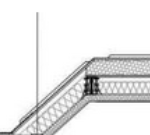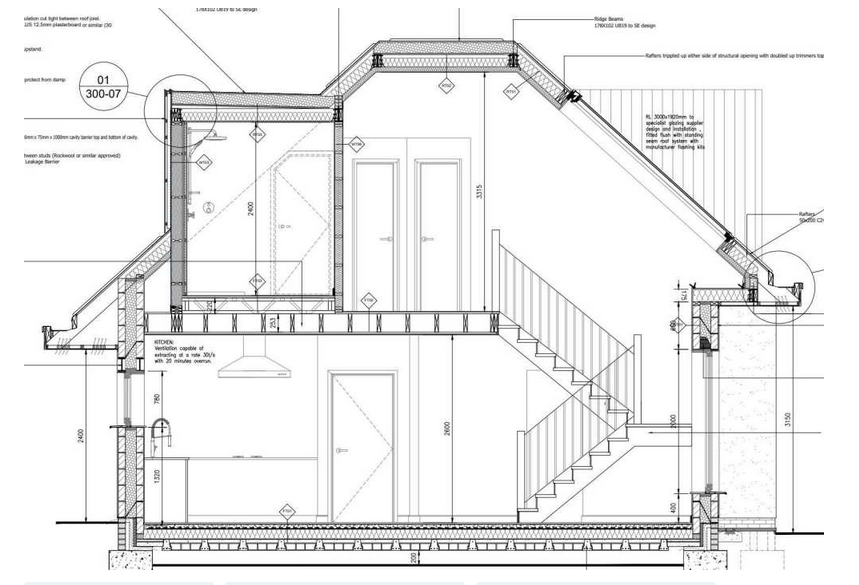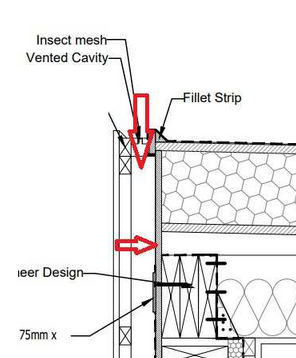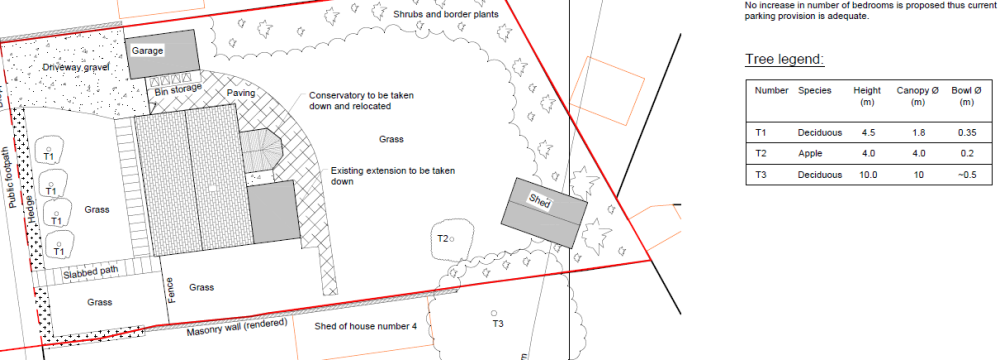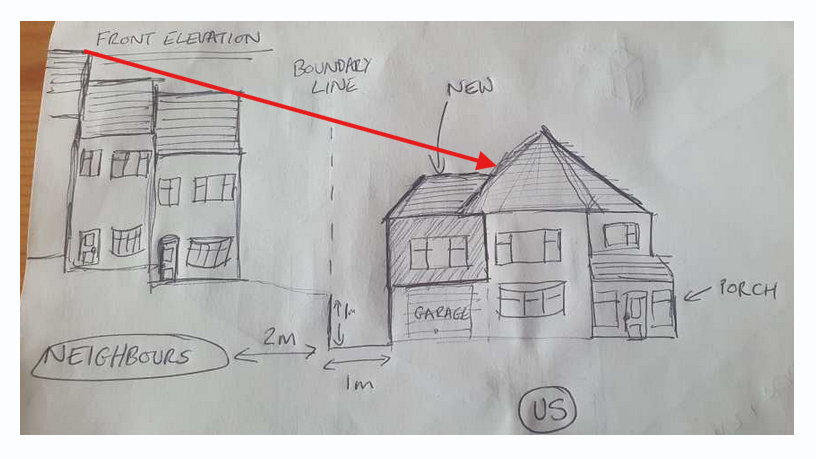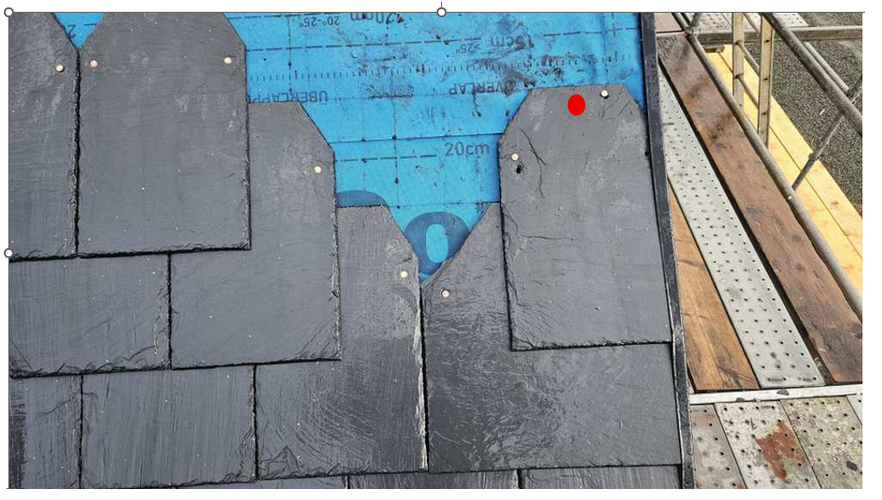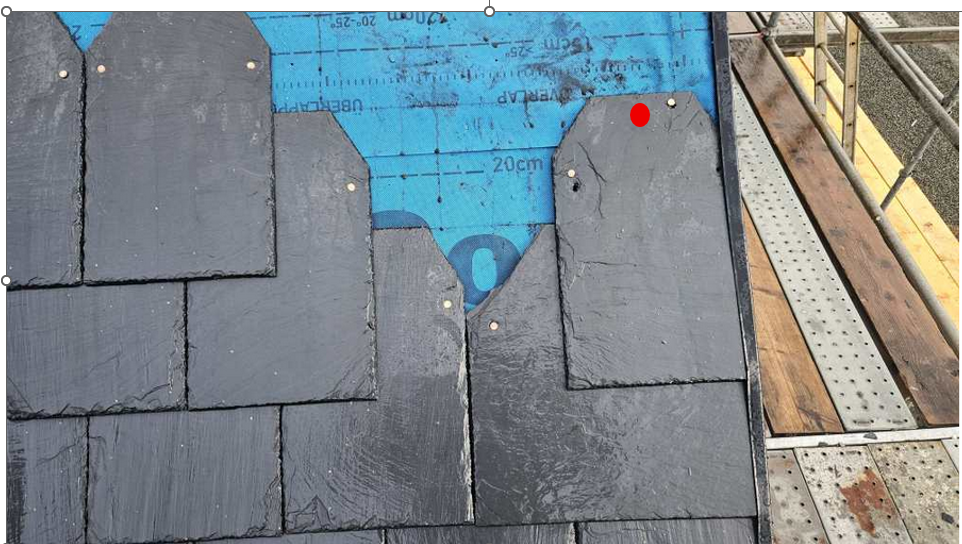
Gus Potter
Members-
Posts
2078 -
Joined
-
Last visited
-
Days Won
25
Everything posted by Gus Potter
-
Post overlapping here Tony. I'm trying to warn you of the challenges you face. I have not considered your internal ventilation, only that the structure is going to work insulation and ventilation wise. The fire protection is always a challenge. Your house is only two stories and detached so pretty benign. In your case so long as any roof steels are not contributing to the stability of a floor or structural load bearing wall they may only need minimal protection. Talk to your SE and you may find it all works boxed in by ordinary plasterboard and buried in the roof dpeth.
- 63 replies
-
- flat roof
- condensation
-
(and 2 more)
Tagged with:
-
Hi Tony. I can see you are putting in a lot of effort into this. I appreciate that your teck may have not "captured" the complexity, but how much are you paying? You get what you pay for to some extent. You sound like a hands on person so if you have just paid you technician from the neck down then what do you expect? This is a hard thing to learn, it takes years. To provide a bit of context. I was a building Contractor for 20 years, went to uni at the age of 40 to become an SE did training and now I've progressed to the point where I'm confident / competent in both SE, Architectural design, whats buildable and cost aware. That is a 40 year journey and every day is a schoolday for me. BH is a great resource. There are folk like you proposing this kind of innovative design. Your sketchup model looks brillaint! It's not that hard if you go about it in the right way. Your SE sounds experienced, pragmatic, some SE's are actually sympathetic! We are not all horrible, sometimes we dish out tough love when it's clear that is what is required to give the Client a bit of a jolt and protect their interests. So what to do? If you want to keep the rest of the team on board then in your own head go back to basics. Bluntly you can probably fix it by reconfiguring what is going on under the bonnet. The planners have no interest in the structure, insulation or what's going on inside the building. All thye are interested in is what it looks like from the outside. If you increase the occupancy that is material as it could impact on the parking provision, but all we are looking at here is seeking a buildable, cost effective design that is not going to fail due to say condensation, water ingress etc. You asked about cold formed steel joists. You are right they can be a bit of wicked cold bridge, but on a warm roof you keep them on the warm side of the insulation. Dormer roofs tend not to be that big span wise. SE wise we need to check the bearing on the dormer face. But here we only need about 50 - 60 mm, this is driven by the fixing requirement into timber to get enough timber edge distance. The bearing strees does not govern usually on a msdest dormer roof. You can get some insulation in to stop the ends of the joists getting cold. Also the cold formed joists may be only 1.2 -1.5mm thick. So while the rate of heat transfer in steel may be much more than a timber if you look at an exposed timber joist end which may be 45mm thick cf a 1.5 mm bit of steel exposed is not as bad as you think. Most folk think about big universal steel beams.. but here we are using thin steels that have a small expose cross section.. it's ecclectic but part of the art of design. I think you can and you need to find a diplomatic way of doing so. It's just a move from the concept to detailed design stage after all! Detailed desin always uncovers unexpected cost elements, design is an itterative process. I pointed out why I think you are going to suffer, all your are doing is developing the design and details as you learn about the best and most cost effective way of achieving what you want.
- 63 replies
-
- flat roof
- condensation
-
(and 2 more)
Tagged with:
-
By all means do. I suspect that my post has not floated your boat! Time will tell though. If you have the will to live with this then keep posting your details as interested in how you are going to overcome the interface details and ventilation challenges that lie ahead for you for the different types of roof construction. I'll say again. What you are doing is very hard. Some of your detail shows what we call a hybrid roof. You have to be very careful here as others have warned. If you shift the dew point to the wrong side you are in trouble and BC will knock you back not least. This detail looks simple as a general detail, but you have to ventilate the cavity area under the sloping portion. Have a go at detailing that out, try and work out how much that is going to cost build wise, what happens at the transition zone. There is no point in drawing the easy cross sections, the devil and cost comes at the interfaces. Be alert to this! I'm not trying to pour cold water on your efforts, you have done well, I'm warning you that unless you have loads of dosh, a huge amount of patience in finding a builder.. it ain't going to happen!
- 63 replies
-
- flat roof
- condensation
-
(and 2 more)
Tagged with:
-
Very risky! If you have enough money to lose and the time to do it then fine. It's a big learning curve. If you have that much money to lose then why not pay someone that carries PI insurance and use the same float to take risks that you are more familiar with, more certain return, play to your own skills. To put this into context. A skilled trades person may charge £250-300 a day. You only need to save two weeks by taking time to understand what you want to build and that will go a long way towards covering the conveyancing. Self building / extending economically is about playing to your strengths, not taking silly risks where you could lose your shirt.
-
Critical and non negotiable design constraint. Very helpful intro as it helps folk like me visualise quickly. Tony. I looked at this and I think what you are trying to do is too hard. To design something like this is really at the high end of technical design ability, it takes years of experience and a wide range of skills. I've thought, could I technically make this work including the SE stuff. I doubt it. Anyway, it's never going to get built as drawn unless you have a huge amount of money, an experienced Clerk of works and you can find a Contractor that is minded to do it and has the skills required. It is in my mind not going to happen and you will be chucking your money down the drain and experience huge frustation as that happens. To take this on as a designer and warranty my design I would be looking for a fair bit of the design fee up front. It's tough love but I think you are likely on a hiding to nothing. I love taking on challenging design but this one in it's current form is not going to work. The design insulation envelope and being able to achieve ventilation where you need it is in my view fundamentally flawed. This does not fly.. the rain will fall straight into the the cavity. The fundamental and most importantly, the practical installation / ventilation details are missing and these are the key elements in getting the whole thing to work. To draw well at this stage you need to know where the hard parts are, you can't kick them down the road and hope it will all sort itself out later! To summarise. There have been lots of useful and helpful suggestions from BH folk but I think you need to go back to the drawing board. First sit down with your SE and ask what structure do we need and check to see that you have enough slack to satisfy the planning constraints and the internal clearance for stairs, ventilation at window heads and maybe fire escape / protection for example. Then look at your roof coverings, can you simplify (make it more buildable) while not compromising the Architectural intent. Where the standing seem zinc needs ventilation and how you do that, how you go about detailng basic interfaces, say between the flat roof and the pitched zinc. These are very hard to do properly, often you need to make compromises using engineering and technical judgement, then justify to say BC. Once you get a handle on that then you can look at the insulation. You mentioned the joist depth on the dormer. From time to time if I need less depth I just swap the timber for a cold formed Cee section, can shave off 50mm depth at a stroke. But this is the least of your worries! Please take a first step back and ask yourself, can I get someone to build this and at what cost. Don't feel embarressed, you have had a good go at you first concept design, got your head around how you insulate, you have learnt a lot.. It's OK to go back and review the whole design as the second time you have a much deeper understanding of the issues. My gut feeling is that if you go back to the drawing board and first principles you'll end up with a much better house, not compromise the Architectural intent and maybe at the same cost in the round, with less grief from a Contractor. You may be reluctant but ask yourself, say if I go back to the beginning, how much will that cost me compared with blindly trying to make what you have work, if your nature is to be stubborn then there is a price to pay for that privilage.
- 63 replies
-
- flat roof
- condensation
-
(and 2 more)
Tagged with:
-
Floor slab insulation. Test my logic please?
Gus Potter replied to saveasteading's topic in Barn Conversions
On my phone but quickly. He went to Strathallan so his weight may be under estimated.. Yes technically the screed will crack further. The screed had no residual tensile strength due to the UFH pipes. So it really works in direct beating only. On balance the packaging is likely not suitable. The screed has a small aggregate and thus aggregate interlock is less reliable. But the shrinkage still remains. -
This is the key safety control. That needs to be coupled with a safety device that stops the cold feed exceeding the safe working load of the cylinder and an expansion vessel if need be. Ideally the flow pressure regulator should be set to say 2/3 of the safe working load top to prevent over stress in the rest of the system. In my view you can play with your electronic controls as much as you like, as they are not safety critical. As always,I mention that at some point you may not be able to maintain this, say you go senile! At some point you may wish to sell the house and if you want to maintain the asset value you'll have to make a case for that. Remember to earth everything electronically.
-
Floor slab insulation. Test my logic please?
Gus Potter replied to saveasteading's topic in Barn Conversions
Interesting! In SE terms. For fun let's take a grand piano. That weighs about 550 kg and has three legs. Thus about, say 183 kg per leg. A "20 -22 stone" rugby prop can in the modern fast game can be 110 kg, but say the team just needs dead weight, so take the prop as 140 kg. Not far off the load from a grand piano leg. But the piano does not walk about, the prop does so lets add a bit of dynamic load to their foot fall. Say 20% thus 1.2* 140kg = 168kg. And all of a sudden we realise that locally on a screed a big lad has something to say and a point to make! Welcome @rjclark71 to BH! To delve into @saveasteading question do we put EPS on top or below the PIR? In this case we are looking at a ground bearing slab that is not supported by (at the edges) or transferring load to the perimeter foundations. There is a cement based screed with underfloor heating pipes (UFH) embeded in it. Now we have a point load ( a piano has a larger foot than a shoe, take the shoe heal as this load is more concentrated. The load from the heal of the shoe gets spread out at roughly 45 degrees down through the screed and onto the first layer of insulation. It then gets spread more down through the insulation thickness. Therefore the compressive stress gets less the deeper you go as the load is spread out more. In conclusion it makes sense to put the weaker insulation on the bottom as the loads are more distributed. -
The basic architect questions thread
Gus Potter replied to SilverShadow's topic in Surveyors & Architects
Onwards and upwards for you this year then! Main thing is to try an have fun, enjoy the design process. Keep us all posted on BH as you go as everyone learns from your journey. -
The basic architect questions thread
Gus Potter replied to SilverShadow's topic in Surveyors & Architects
Hope you had a fun time toooo! These sketch drawings are very good! Well done. In terms of the daylight to next door you're allowed a certain reduction before it becomes material. It's somewhere in the docs I think. The overshaddowing of the neighbours doesn't seem to be much of an issue, yet to see the rear elevation, I suspect that may well be ok. Your house is significanlty lower. This is a good observation. But the houses are still well separated and you're proposed new roof still significantly lower. If you project a roof line of the terrace down the hill what you are proposing is stil below that. If push comes to shove you could set back the face of the extension a little and / or tweak the roof so the gutter is a little lower than the main house, makes it more subservient / less mass. Usually 1.0m is accepted but I would go for 500mm if pressed as a first offer. Don't offer this up to start with, stick to what you want. If you can sketch like this then have you thought about doing you own scaled hand drawings and submitting a planning application under your own steam? This at least will let you see, what if any, concerns the planners may have and leaves you in full control over the design process at your end. If you do your own application then there is other stuff you need to submit, but that applies in all cases. Here is a quick, but not comprehensive list of things that help build a planning application like this. 1/ A site location plan, OS or say from UK Planning Maps etc, main thing is that it has a copyright number, address and a grid reference. 2/ A block plan showing the site and as you have trees you need to identify these, both within and adjacent your site. Also hedges, fences and heights. I often do a little table and annotate the drawing. Also show existing parking and proposed parking provision, bin storage area and access (also width) to rear garden. The block plan should also show the neighbours with some basic dimensions where the planners might be interested.. You also need to show the garden area and that there is sufficient garden (curtilage) left after you have built the extension. You'll find a guide in the permitted development (PD) guide. In this case you may need to do a block plan on elevation similar to what I posted earlier. Like this: 3/ Site photographs. 4/ Drawings as a minimum. All existing and proposed: Elevations, ground and first floor plans with the rooms annotated, associated with parking provision not least. A roof plan with the roof slopes indicated. Make sure you add a drawing title box, scale bar, a north point on the plan drawings and identify each elevation clearly. 5/ Some water boards are a bit touchy about adding a roof area and connecting the rainwater run off into the existing drainage system. Do a bit of research on this and keep your findings under your hat for now. 6/ Try not to be overly helpful and avoid highlighting things that "might" be debatable say if you were trying to argue some wierd technical planning detail down the pub. Let the planners do their job and come back to you with any requests for more detail. If you fancy doing the drawings yourself then you'll get loads of tips on BH about what and what not to do and, also how to avoid excessive work. -
Did anyone open doors in the house, go out and get mucky and need a shower, was it a windy day or not, have you moved the furniture about or got a new sofa. Nice idea but at my end it's just like a theoretical, like structural design model, it's there to inform, and only that.
-
That's good news. If you both work together then it should work out ok. Don't forget to enjoy the build, few folk get to do this kind of stuff.
-
I'll address this first. I've been in the construction industry for about 40 years, first as a building contractor, doing house extensions and self builds for folk, reinvented myself at 40 years old, went to uni to become an SE and fallen into the architectural design side. So I've got a varied experience, still learning though! The main thing is that I've been self employed / ran a building business with employees for most of my working life and have met lots of different types of customers. What I can say is that over the last 40 years I've met some customers that are demanding, hard to work with and at times we just don't gell. We are not going to go to the pub at the end of the job, but you need to be professional and suck it up. The trust issue is a major thing, once that is lost it's hard / impossible to recover. @frslam Looking at the quality of work in your photos, the way you have presented on BH, I think you are justified in losing trust in the roofer. My gut feeling is that it's got nothing to do with your personality and much more to do with the fact that the work is shite and the roofer has tried to pull the wool over your eyes. It's messy the situation you are in. But at the end of the day from what I've seen the roofer does not have a leg to stand on at times, but what we need to show is if this a material detriment. In design terms we need to go back and check that the slates, laps are suitable for the exposure conditions. That the flashings and Velux are ok for this roof pitch and so on. Ok the legal stuff. This is good. You are forensic. It seems you are due money to the roofer. Your starting point here is to say, what if this ends up in court! Everything you do from now on has to be structured on that premise. You have to be able to show that you have sought resolution at all times. Let the roofer throw their toys out the pram. Ignore the threat of legal action from the roofer for now. Just ask them to demonstrate and evidence that all the work they have done is compliant with the manufacture's recomendations and the building regulations. Explain that at some point you are going to have to get a completion certificate from the council and when doing so someone (probaly you) is going to have to certify that the work has been carried out to the Scottish Building Standards. Express some concern that Building Standards may ask for record photographs. At this stage do not contact Buildings Standards, PM me first! If that is not forthcoming then they (roofer) are on a shoogly peg.
-
The big question is here is your friend going to be doing the work? A word of caution. Friendships can end quickly if there is a disagreement about money. I can see you have got all the major design elements in place and put that into work packages. You have to double check all setting out, where the design interfaces stop. I work from time to time as a lead designer / Structural engineer and the problems often arise at the interfaces between the different design packages not marrying up. Some are downright dangerous. This is where your risk and unforseen costs lie. Neglect this at your peril. Be blunt and ask each work package provider if what they are doing is going to fit with the next part of the structure. I bet your SIPS supplier has made caveats, DO NOT bury your head in the sand. Provide them with drawings of the interfaces and ask them specifically "IS YOUR DESIGN COMPATIBLE" with the proposed interface and what structral forces need to be transferred. You'll see they caveat stuff. That is fair but you MUST understand what the caveats mean. The fact that you are on BH suggests to me that while your friend may be experienced they may be missing something. Diplomacy is going to be required here.
-
John is right. Once the SIPS are fabricated there is no turning back without potential big cost. In my experience of self builds the design does get changed more often than not. It is often a small thing, an unforseen event. .That said, if you have really been this through this and looked at the savings / vs change risk then ok. But you have to have every service position thought out, boiler flue.. everything, a detailed an dimensioned foundation design and so on. There is no margin for error on SIPS. SIPS work say on the Athletes Village in Glasgow where they had a few house types but built many. I have have Clients that want to adapt and they are a nightmare. The designer could afford to go into every last detail as there was economy of scale. On a self build to get this to work you need to pay your designer enough to ensure every last bit fits together, is regs compliant and both of you need to work together very closely. I suspect you have not done this. Paid them enough? Get to the bottom of this. Your Architect may be a little unsure, they may be nervious as lack experience. It's not a bad thing, everyone needs to learn and work together. You may be a bit of a "scary client" and to your own detriment you may be forcing the design when actually you should not. This is business and if I get a Client that just wants to "pay me from the neck down" I'll warn them of the risks, usually twice... what comes after is for another day. This is some of the best advice you will ever get! Also check you window order, opening direction is a common mistake, hard to believe but it happens on a regular occurance.
-
Rear extension into a garden with a swimming pool
Gus Potter replied to Sidd's topic in House Extensions & Conservatories
Yes indeed. I should have said, most Structural Engineers and competant Contractors (like you) will take this in their stride. II liked your idea and it is so obvious.. with hind sight empty the pool first but choose the time to fill it back up as the ground works progress. It sounds like an interesting project, opportunity to value engineer. But can't say much more without drawings. -
The mortar strength is far too much for these blocks. Politely ask your Architect if they can explain to you how the old and new building are doing to interact in terms of day to day movement and cement base blockwork shrinkage, that starts from the founds up. Then ask them to detail the movement joints in such a way that it also stands a good chance of meeting the Structural Engineers tying and stability requirements and explain to you how that all works. A competant Architect should take this in their stride.
-
To add an unfortunate bit. Your verge closure seem incorrect. The vapour membrane should be under these. Traditionally these slates should be undertailed. Rather than write at length about this I've used AI and checked that what is says, I agree with. Copied below. I am of the view and have always done so when slating roofs in my last life as a builder that the verge slates should be tailed as well. In your Hhighland location we need to make use of every trick and technique. I wonder if your roofer can even beging to address some of the issues? AI output: The traditional method for "tailing" slates in a valley refers to a specific cutting and laying technique where the bottom edge, or tail, of the cut slate is inverted to direct rainwater away from the vulnerable valley lining and back onto the main roof surface. This is a traditional craft skill that employs the principles of capillary action and surface tension to manage water flow effectively. The Mechanics and Importance of Traditional "Tailing" Understanding how this intricate system works provides insight into the mastery of traditional slating. It's a method born out of necessity, predating the common availability and reliance on extensive lead flashing, and it continues to be valued in historic building conservation. Capillary Action and Surface Tension: The technique relies on the natural properties of water. When a slate is cut, it exposes a sharp edge. Normally, water might cling to this edge or be drawn underneath the slate due to capillary action, potentially dripping onto the underlying valley lining (often lead) or the roof structure below. The Inverted Cut (Tailing): To counteract this, the slater takes the slate that is to be laid on the rake (the diagonal line of the valley) and essentially cuts its bottom edge as if it were the top edge (head) of a slate, or by flipping the slate upside down to make the cut. This results in the exposed, raw edge facing downwards, towards the eave, while the smoother, "dressed" (original) edge or a specifically angled cut faces up and into the valley. Water Shedding: This subtle inversion of the tail ensures that water running down the face of the slate forms a meniscus and trickles along the surface, shedding water back onto the top of the adjacent, lower slates and ultimately into the main flow channel of the valley, rather than dripping inward or compromising the integrity of the lead lining. Why This Technique is Crucial The 'tailing' technique is not just about aesthetics; it has substantial structural and protective benefits: Protection of the Valley Lining: By actively shedding water away, it reduces the amount of direct impact and continuous moisture on the lead or metal valley gutter, which helps to extend the lifespan of the metal and prevents premature wear, corrosion, or pinholing. Frost Protection: A sharp, exposed edge of slate is more susceptible to frost damage and general maintenance-related damage. The 'tailing' method protects this vulnerable edge by tucking it or angling it in a less exposed manner. Preventing Infiltration: The primary goal is enhanced weather resistance. Traditional slate roofs are "water-shedding" systems, relying on gravity and precise overlapping rather than being a fully watertight membrane like some modern low-slope roofs. This meticulous detailing at the vulnerable valley intersection is essential for preventing water ingress into the building structure below. Traditional Valley Construction Traditionally, valleys were formed using skill and ingenuity before the widespread availability of modern materials. The slates in the valley would typically be laid over a robust wooden valley board, which was installed flush with the rafters. A metal lining, usually lead, was placed over the board. The slates from each intersecting roof slope are then cut and "tailed" to meet the valley line, creating a clean, weatherproof junction. Common traditional valley types also included: Double-cut valleys: Slates on both sides were cut to overlap a narrow strip of slates laid up the centre of the valley. Single-cut or half-swept valleys: Where one side (often the steeper pitch) was cut, and the other side's slates were swept across the intersection. The 'tailing' technique is a testament to the high level of skill involved in historical slating, showcasing how traditional builders achieved durable, long-lasting results through an intimate understanding of materials and physics. In summary, 'tailing' in traditional slate valley construction is a superb example of how traditional crafts incorporate subtle yet vital techniques to manage water flow, protect materials, and ensure the overall longevity and weather-tightness of a heritage roof.
-
Hope this helps to give you a bit of an insight, feel free to discuss. Your Highland location is relative as its very windy often and coupled with heavy rain. But to start from not where you are! In the central belt and in the Scottish borders the general rule is if you were using Welsh, or Norwegian slate (these are a lovely green / blueish slate and very hard wearing, used in Edinburgh on high end houses) say was to single nail every slate but cheek nail every third course. A cheek nail would go where the red dot is below. The head of the slate is kept square. The nail head is big enough to lock onto the side of the slate. All these slates are realitvely thin. A hard Welsh slate can be very durable but workable, the beds split easily in the quarry. You would have a nail in the head of the slate. One inch down as below: Now the beauty of this is that it make the roof easy to maintain. If you get a broken slate then you can turn the slates easily to fix the broken ones. Traditionally folk would get the Slater in every so often to check the roof and maintain, clear the valleys and check any drip type flashingsl for holes, often at low cost. Now along came say the warranty providers. They are looking for say 10 years warranty. Now the cynical might say. See if we double nail every slate as above then the chances of a split slate falling out are slim as it very hard to spot a split slate from the ground. Scotch slates are a different animal. They tend to vary in thickness a lot and are smaller. Because they are thick they are heavier so tend to lift less, parly due to their own self weight and the smaller size increases the density of the nailing. The nails are still one inch from the head so the bending force in the slate is less and this stops the slate from breaking at the nail point. Where this happens is down to the skill and knowledge passed down from traditionally father to son / apprentice. A skilled person will know that eaves, verges are vulnerable, but also around chimneys and the like. The wind in the highlands can be ferocious! He should have graded them. Cupa's at the very least in my view should be graded into two piles. Thick ones at the bottom, thin at the top. Usually I would grade into three piles. It's important to understand what the membrane is supposed to do. Traditionally there was no roof felt or membrane. There are many roofs in Scotland that just have slates on timber sarking. This worked traditionally as there was no insulation in the loft and any water that got in quicky dried out. I sometimes get asked this question and am acutely aware that if I'm insulating this kind of roof I need be very careful, call it conservation design. In the (I think) 1930's they developed bituminous roofing felts, often called a type 1F today. These were water and pretty much vapour proof. So to make that work they introduced eaves and ridge ventilation. For all on BH.. Heads up! there was an invention of felt called ASTOS. Folk realised that you could use bitiminous felts for flat roofs but they burnt well. So they included asbestos. The clue is in the name. Your membrane is NOT intended to stop water ingress it's mainly there to stop wind driven snow, odd water mist and to let the roof breath. It's not like 1F felt and never has been intended to do so. Your starting point is to really understand the mechanics behind this, how your roof was supposed to work and then why it's not. Legal action is the last resort. But before you even go there you need to check that the roofer has some assets you can go after. With a fair wind if he is not limited and has other assets, other than a marital home. Seek legal advice pronto before going down this route.. to freeze assets say , that is not free and if you do it maliciously then the builder will come after you! Don't discount this. I had a Client that got trading standards involved in a case where the builder had been fradulent. If your roofer has stated that he has supplied, installed materials and billed you for it and it turns out that he never actually supplied the materials then that is fraud. Trading standards were supportive (the builder was already known to them as a chancer) so it might be worth calling them up to test the water. In summary though, you need to work out and check all your flashing and slate details and work out why the roof is failing in the geographic location, yes I know it's not finished.
-
Rear extension into a garden with a swimming pool
Gus Potter replied to Sidd's topic in House Extensions & Conservatories
Yes it's pretty basic stuff. The pool depth is only about 1.5 m say 2.0m to formation level, maybe the odd local sump. Not sure at the moment, would like to see some drawings. Most folk will take something like this in their stride. -
Hope you can get your hand sorted out. That sounds like a bad accident, don't blame yoursefl, it could happen to anyone. To business. I think you likely have enough to evidence against the standards, so not subjective. Unless you have over egged your post. But you have not provided that many photographs. Your sarking boards are treated, so not rotting, so I would not want to hang my hat on that as as a basis. But here is a question. If the roof has a breathable membrane then we need to have gaps between the sarking boards. I specify 100 mm wide boards with a 5.0 mm gap. You don't seem to have this. A competent roofer should know that this is a general requirement and check that the membrane is ok and the sarking gap. As an art of slating the slates at the verges are not tailed to shed the water back towards the roof. But you have plastic verges, just a symptom of decreasing skill level in the slating trade. My gut feeling is that if I and others on BH were to look under the bonnet we would come up with evidence that supports the arguement that you should not pay this contractor the balance. I trust you have photos from the inside of the roof. Lets have a look at the Velux trimming and so on. What nails has the roofer used? Let us know so we can check they have used the right ones. How close are you to the sea? Legally what you might want to ( I'm not a Lawyer so don't come after me!) is confirm if the Contractor intends to return or not. If they say they are going to return then you need to spell out the defects you want addressed, at their expense and when they are going to do that. You might want to say that if you can't agree then you will both agree on an independent arbitor. Now there is a good chance that the Contractor won't come back as they have chucked their toys out the pram. But you have to go through the process so protecting yourself. The contractors wife may be a Lawyer and work pro bono.
-
Each time you use an abbreviation, use it then in brackets, explain the abbreviation, you only need to do this once. For new folk to BH this is important, as an SE I think it's just poor commuication. If you want to get your point over then follow this format, otherwise folk will lose interest. I agree the English planning system is a mess, the Scottish system is much further developed. It's still not easy, but much easier to navigate as it gives everyone, including devleopers better guidnce. It still has some major pitfalls for self builders. In summary it's about time the English system sorted it's self out. It's going to take time and some horrible things are going to happen.. but any reform of the English planning system is going to be painfull. The chances of delivering enough housing is limited, the best way to control this is to stop the population from rising! While this new document seems encouraging it does not address the elephant in the room which is the supporting infrastructure.. the drains, hospitals ect need to keep up. On a personal note. The strategy seems fundamentally flawed to me. This idea that you have to travel to work is mental. It does not make for social cohesion. I live in East Kilbride which was one of the first new towns, the idea started in 1947. The plan really started to work in about the late sixties when they thought.. lets build some industrial units and offer grants to multinationals to set up shop. The offer was, you come here and we will build the houses that provide the workforce. Motoralla were one of the first, Rolls Royce, the Department for international Development followed. The jobs were well paying, folk built lives and family in East Kilbride, small busdiness units were offered to provide the secondary support mechanisms that we all need. My father in laws dad ran the local shoe shop. Unfortunately this fundaments concept has been lost. Now I know lot's of folk are enthusiastic on BH about this change in the English system.. but what if it later this works against you and you ideal plot gets blighted by someone next door.. be careful what you wish for! In the round there is no point in building your dream home if the surrounding area has no community or just turn into a shit hole.

